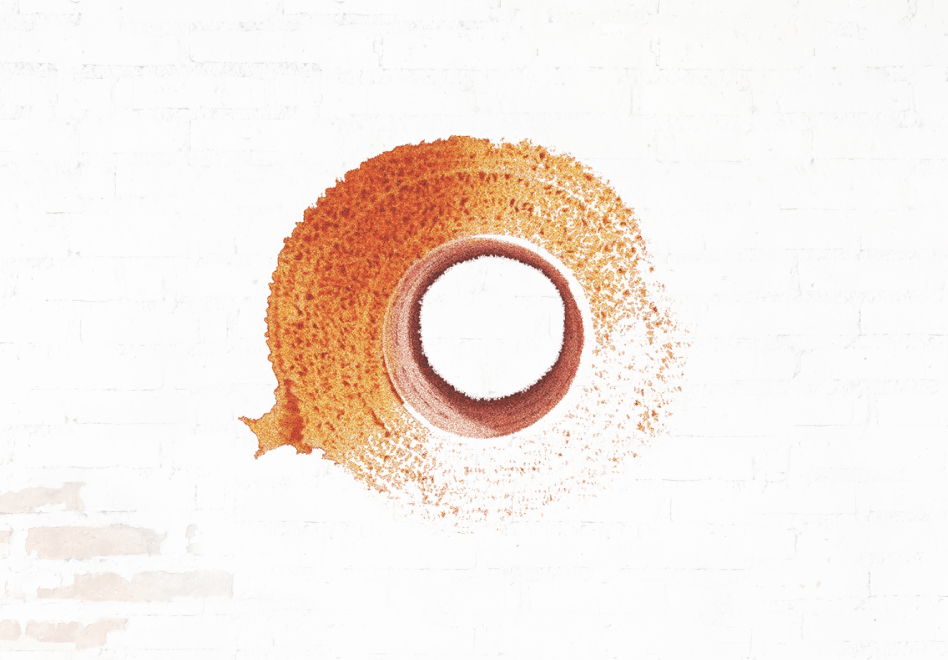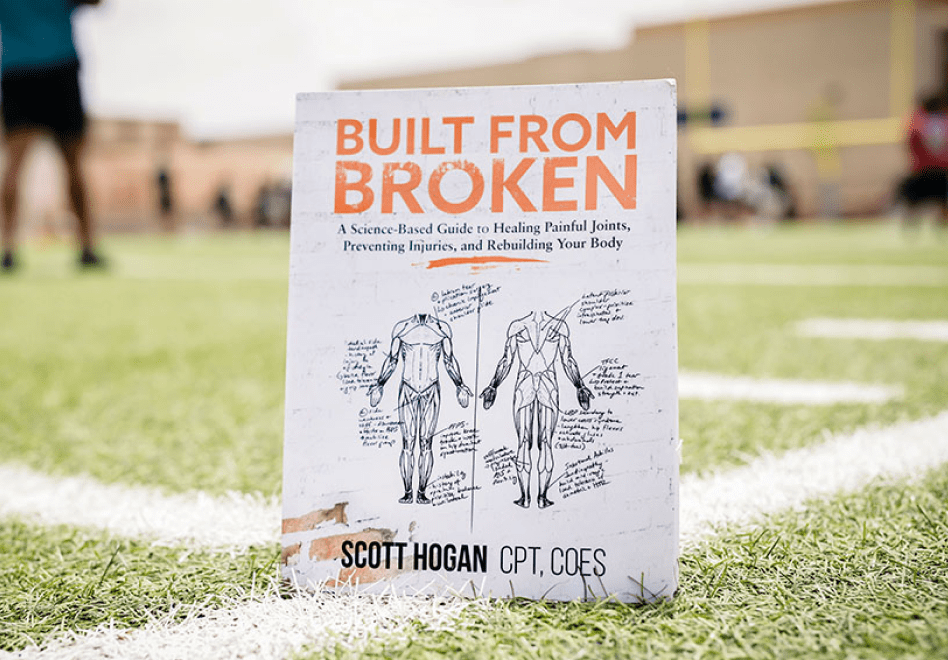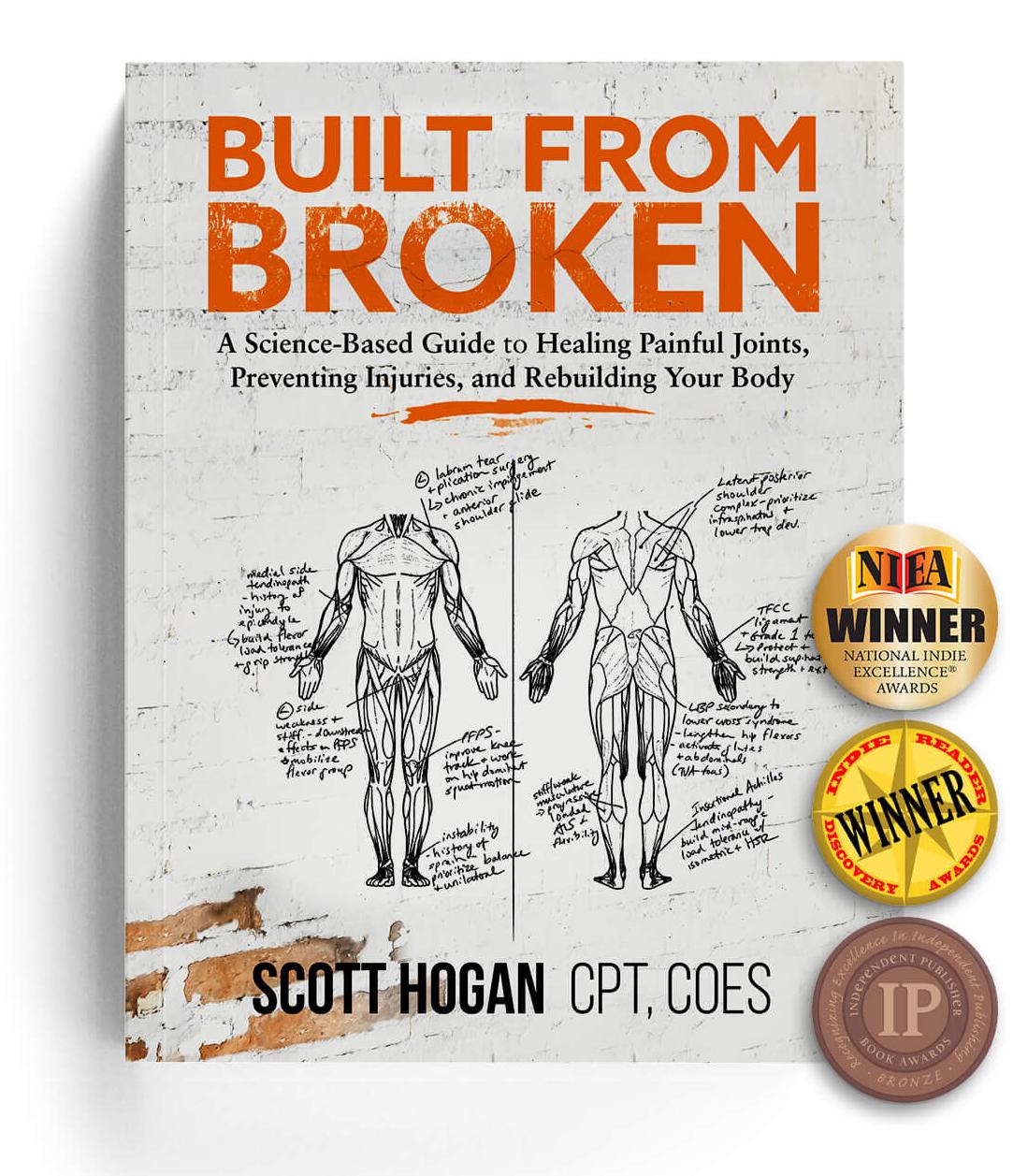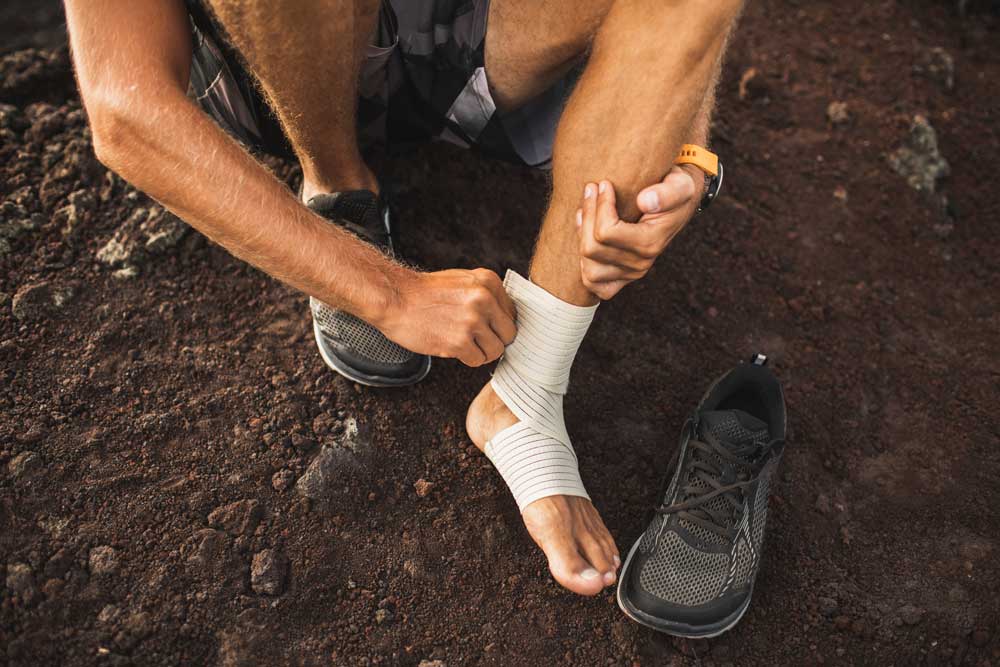
Be built (to last).
The right supplements can help you recover naturally and build a resilient body.

Supplement Quiz
Take this short quiz to discover the perfect supplements for your needs and goals.
About SaltWrap
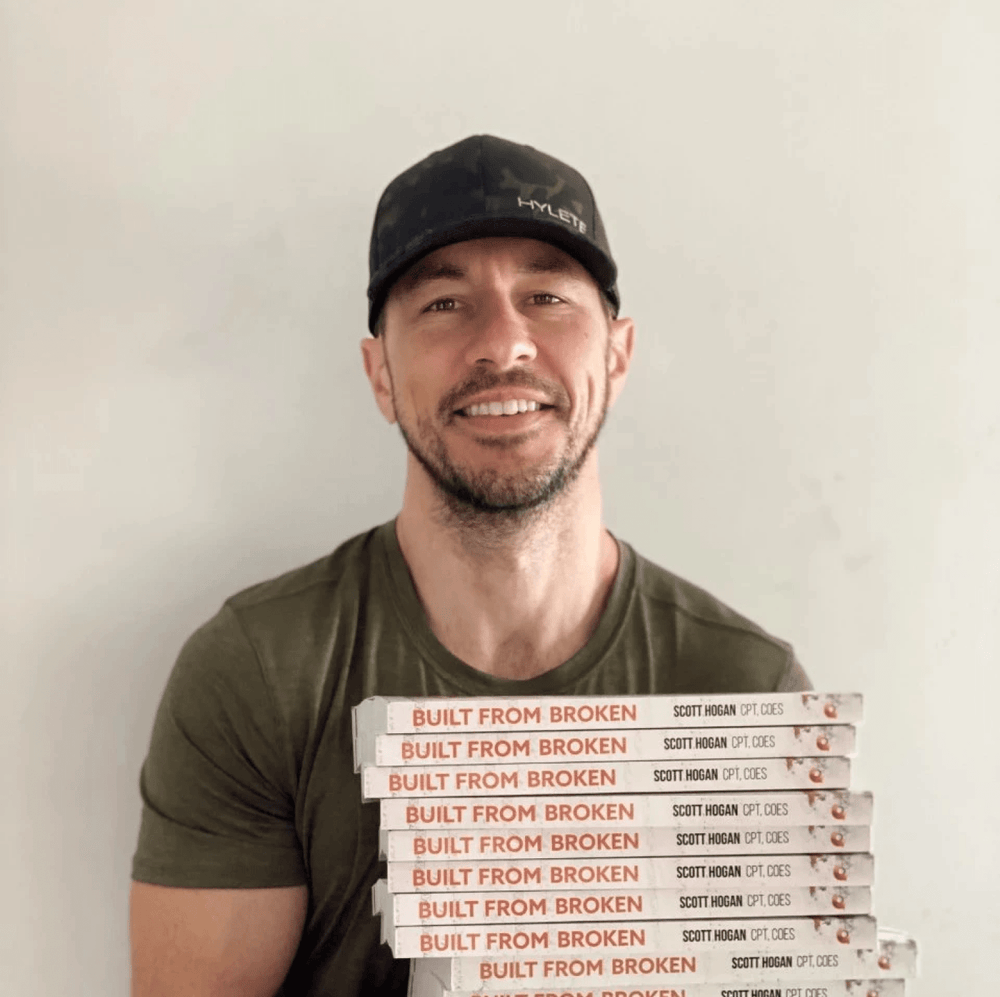
Built from Broken
Get the best-selling book from SaltWrap founder, Scott Hogan, and start rebuilding today.
The Cumulative Injury Cycle: A Practical Model for Injury Prevention
by Scott Hogan, ACE-CPT, COES
The cumulative injury cycle is the key to understanding why your body is constantly breaking down. Why aches and pains crop up seemingly from thin air. Why your functional strength and mobility are declining (with no slowdown in sight). And why as soon as you get over one injury, you suffer another.
All these problems are tied to one root problem (and one root solution). And it’s not just “part of aging.” Age is a factor, sure. But even the aging process has specific physiological drivers (especially when it comes to connective tissue health). The most distracting and deceptive part of this process is pain itself.
The primary purpose of pain is to be a messenger. And while pain can vary in type and intensity, the message is always the same: “Something is WRONG here.” Pain is so good at getting your attention, in fact, that it’s all too easy to misunderstand the actual problem. And it ain’t the pain.
Pain can be calmed, deadened, and artificially suppressed with a number of symptom-focused treatments. But that doesn’t solve the underlying cause of the pain. The point I’m trying to make is that your main problem is not pain itself, but what lies underneath it: the cumulative injury cycle.
Theoretically, you could bang yourself up with pain medication and repeating surgeries and keep pain at bay (for a while), but that doesn’t give you a life worth living.
So, it follows that your goal should not be to simply “live pain free” but to stop the cumulative injury cycle.
If you think you are too damaged, too broken, or just too old to banish joint pain and rebuild your body—stick with me for a minute. I want to show you something.
I’m going to show you how the cumulative injury cycle works, how to stop it, and how to rebuild your body stronger than before. (note: I didn’t say “help you rehabilitate painful joints” — I said rebuild your body stronger than before).
But before you can break free from the cumulative injury cycle, you need to understand how you got here.
What is the cumulative injury cycle?
The cumulative injury cycle is a process of self-perpetuating tissue damage, inflammatory responses, altered movement mechanics, and excessive loading stress that is most commonly caused by an initial injury or muscle imbalance.
The steps of the cumulative injury cycle
According to the National Academy of Sports Medicine, the organization credited for coining the term “cumulative injury cycle,” the steps involve a cascading process that starts with tissue trauma.
The key components of the cumulative injury cycle are:
- Tissue trauma
- Inflammation
- Muscle spasms
- Adhesions (muscle knots and tightly bundled sections of soft tissue)
- Altered neuromuscular control
- Muscle imbalances
Another associated term is the pain compensation cycle, which is more comprehensive and in my opinion more descriptive of the actual underlying problem and process.
What is the difference between the Cumulative Injury Cycle and Pain Compensation Cycle?
Cumulative injury cycle and pain compensation cycle appear to be synonyms, but there is a key difference between the two.
While the cumulative injury cycle focuses primarily on physiological changes that occur post-injury (that lead to further injury), the pain compensation cycle illustrates how pain leads to altered physical function in ways that perpetuate the pain signaling process. One focuses on the injury process; the other focuses on the pain process.
The pain compensation cycle also typically includes additional steps that allow for wider interpretations of how the process starts. The first step in the cumulative injury cycle is tissue trauma. But the first step in the pain compensation cycle can be any part of the process.
As you can see from the pain compensation cycle illustration, you can jump into this proceeding cycle at any point.
It’s also worth noting that simply viewing the injury process as a cycle that starts with tissue trauma is a gross oversimplification. It also prevents us from understanding the root cause of the injury.
For example, experts estimate that up to 97% of spontaneous tendon ruptures have some amount of pre-existing tendon degeneration. This means that weakened tissues were more prone to injury, and that whatever acute incident (e.g. a fall) caused the injury may not have resulted in tissue damage had the body part not already been compromised.
You can and should take the detective work even further, asking “what caused the preceding tissue degeneration in the first place?” This is a difficult and complex question, but one worth investigating. Often the answer to that question is a muscle imbalance, postural fault, or repetitive use trauma caused by faulty movement habits and poor exercise programming.
Related: The Ultimate 5-Step Injury Recovery Guide
How does the cumulative injury cycle begin?
A muscle balance occurs when a muscle is smaller, weaker, or less mobile than corresponding muscles on the other side of the body or within a joint system.
Although it’s impossible to pinpoint where things went south in most cases, muscle imbalance is the common entry point for the pain compensation cycle—especially for people who are already active and exercise regularly.
For example, sprinters with a muscle imbalance between the hamstrings and opposing quadriceps muscles have a 17-fold increased risk of a hamstring injury.
Muscle imbalances can affect the balance of force against a specific joint, causing one side of the joint or musculature to absorb excessive stress and load. This is called an agonist-antagonist imbalance. The example of sprinters with a hamstring/quadriceps strength imbalance is a perfect example of this in action.
Muscle imbalances can also hinder the way muscles work together to rotate a joint (force-couple imbalance), or which muscles are doing the work (synergistic dominance).
Memorizing types of imbalances is not necessary to understand and manage the pain compensation cycle. The important thing is that muscle imbalances are common, misunderstood, and generally neglected with traditional approaches to resistance training and aerobic exercise.
So, let’s look at the case of a muscle imbalance around the low back caused by inactive glutes:
-
Muscle imbalance (the trigger): In this hypothetical case, our patient has tight hip flexors and inactive glute (butt) muscles—a common imbalance resulting from too much sitting and poor exercise programming. Because the glutes are responsible for much of the pushing and hinging motion, this is not a good situation.
-
Postural fault: inactive glutes result in poor sitting and standing posture (known as static posture) which further reinforces poor movement patterns (known as dynamic posture).
-
Altered joint mechanics: During squatting or hip hinge movements, the low back, hamstrings, and hip flexors have to step as up prime movers (this is especially bad for the low back, since it was designed to be stable (fixed) rather than mobile. The joints above your low back (thoracic spine) and below (hips and knees) are also compromised as their mechanics shift.
-
Reduced mobility, stability and strength: Not only does this compensation reduce force capability, it limits your ability to stabilize your spine during movement and inhibits mobility.
-
Excessive loading stress: The low back and knees take a beating from the repeated unnatural movements that force the joints out of their natural stable positions.
-
Inflammation: Minor injuries to connective tissue like tendons, ligaments, and muscles create a cascade of inflammation to repair the microtrauma.
-
Pain and injury: Inflammatory-based pain occurs from small injuries, and risk of traumatic injury increases over time the longer inflammation is high and the movement patterns are altered.
- Additional muscle imbalances: With still inactive glutes, tighter hip flexors, and stressed low back and hips—other muscles imbalances will surface and the cycle spins again.
Muscle imbalances, such as upper cross syndrome, often involve multiple tight and weak muscle groups that inhibit proper movement patterns.
What causes the cumulative injury cycle?
First, the cumulative injury cycle is now the default path of human life. Even though we weren’t designed to break down. Quite the opposite. We are the most adaptable species on the planet. We weren’t created with crappy anatomical design. No, we end up in the cumulative injury cycle due to our lifestyle, movement habits, posture, diet, and even modern conveniences like chairs and cars.
Second, everything you are doing to ‘fix’ your pain is making it worse. Some pain management approaches can actually spur on the cumulative injury cycle.
Here are a few instances of conventional wisdom that can backfire if overused while neglecting the root cause of injury:
- How do you manage pain and injury? “Rest, ice, use NSAIDs and anti-inflammatories, and use a brace or other pain-preventing device if needed.”
- How do you manage poor mobility and muscle stiffness? “Stretch!”
- How do you manage altered joint mechanics and painful movement patterns? “Work around the injury to let it heal (find other activities that don’t give you problems).”
- How do you address postural faults? “It’s simple—fix your posture! Stand up straight, don’t slump.”
- How do you manage repetitive use injuries caused by excessive loading stress? “Reduce the load, reduce the frequency, or modify the activity.”
All the interventions listed above have one thing in common: they only treat symptoms and neglect the true root cause. Some of these interventions have negative health consequences as well. To learn more about the dangers of NSAIDs, see the article Supplements for Injury Recovery: The Definitive Guide.
Third, the cumulative injury cycle only has its way with you when it becomes a reinforcing feedback loop. In an ideal world, you will recover from an injury naturally without cascading physiological effects that lead to further injury.
🔬 Reinforcing Feedback Loops
A reinforcing feedback loop is formed when changes in the stock affect the flows into or out of the same stock. Essentially, it’s the snow-ball effect. As the snow ball rolls down the hill, it gather mass. As it’s mass grows, the faster it can roll and the more stock it can pick up, which leads to exponential growth from a small snowball to a massive boulder-sized snowball.
The defining characteristic of reinforcing feedback loops is that they feed off themselves, leading to either exponential growth or catastrophic collapses of stock over time.
So the question behind the question becomes, “why does an injury turn into a reinforcing feedback loop of more injuries (instead of just healing naturally)?”
This is the most important question we can ask.
And the answer is: “because we have not sufficiently addressed the true root cause.”
Your body does its best to manage symptoms and second-order effects of injury. But until you stop the underlying cause, the cumulative injury cycle will be constantly fed and continued, leading to a reinforcing feedback loop of injury, inflammation, and altered function that becomes increasingly difficult to break free from.
The solution to the cumulative injury cycle problem is three-fold:
- Understand on a deep level what caused your initial injury and what factors lie behind that cause.
- Manage symptoms the best you can to allow for continued movement. Giving up and becoming sedentary is the worst thing you can do when faced with a cumulative injury cycle problem.
- Aggressively treat the underlying muscle imbalance, movement dysfunction, or postural fault that led to the initial injury in the first place. Unless you resolve this step, the injury will simply rear its ugly head in the future, kickstarting the whole process again.
How to stop the cumulative injury cycle
After years of repeated injuries and realizing that my body was becoming increasingly fragile, despite spending hours in the gym each week (and being a supposed expert who trained fitness clients), I decided enough was enough.
I realized no one was going to put together all the pieces for me. I'd have to do it myself. So, I began the slow, arduous process of assembling the pieces. Eventually constructing a complete program that heals and prevents the most common injuries fitness enthusiasts and active hobbyists face.
Leveraging fundamental science-based principles from joint physiology, therapeutic sports nutrition, and the study of ergonomics.
Built from Broken is the story of how I finally recovered from (years) old nagging injuries, stopped tearing my joints apart with overuse injuries, and finally built a pain-free, functional body.
More than that, it's a guide on exactly how you can do the same. It starts with understanding the truth about pain management, mobility training, and the joint degeneration process. From there, you can start rebuilding the scaffolding of your body, mobilizing latent muscles, and building real strength.
If the mainstream methods aren't working for you, why not try something new? Thousands of broken down and beat up men and women have already put these principles to work.
Now, it’s your turn.
At the link below you can learn more about my best-selling book, Built from Broken, and read stories from exercise enthusiasts and aging athletes who are finally getting the pain-free results they have been chasing for years.
Conclusion
No amount of pain-relieving tactics will target the root cause of pain, just as no injury recovery methods will prevent the injury from happening again.
To truly break free from the cumulative injury cycle, you must understand the cycle, the causes, and apply those to your own injury history and physiology.
While you can and should leverage trusted health providers at each step of your recovery and exercise programming, you also have to be your own advocate. No one knows your body like you. Any time and energy you invest into understanding the cumulative injury cycle will pay you dividends for the rest of your life.
For a complete corrective exercise guide and global view of how to prevent the cumulative injury cycle, check out my book, Built from Broken.
Founder: Scott Hogan

I created SaltWrap to bring together the most practical ideas in therapeutic sports nutrition, corrective exercise, and functional fitness — with the goal of keeping you (and myself) strong, mobile, and built to last.
I've worked as an A.C.E. Certified Personal Trainer, Orthopedic Exercise Specialist, and nutritional supplement formulator.
But more importantly — I've spent most of my life battling injuries, joint pain, and just being plain beat up. So I know what it's like to struggle toward fitness goals.
SaltWrap is here to push you through injuries, setbacks and perceived physical limitations. To a place beyond what you think you're capable of. Sign up here to stay in the loop.
Learn more about my best-selling injury prevention and recovery book, Built from Broken.

